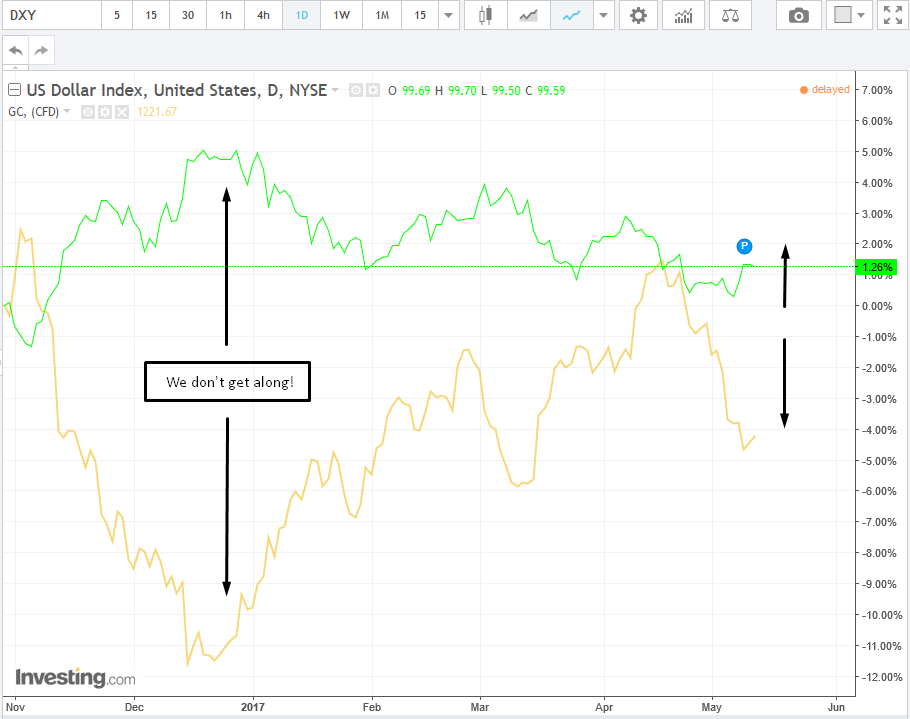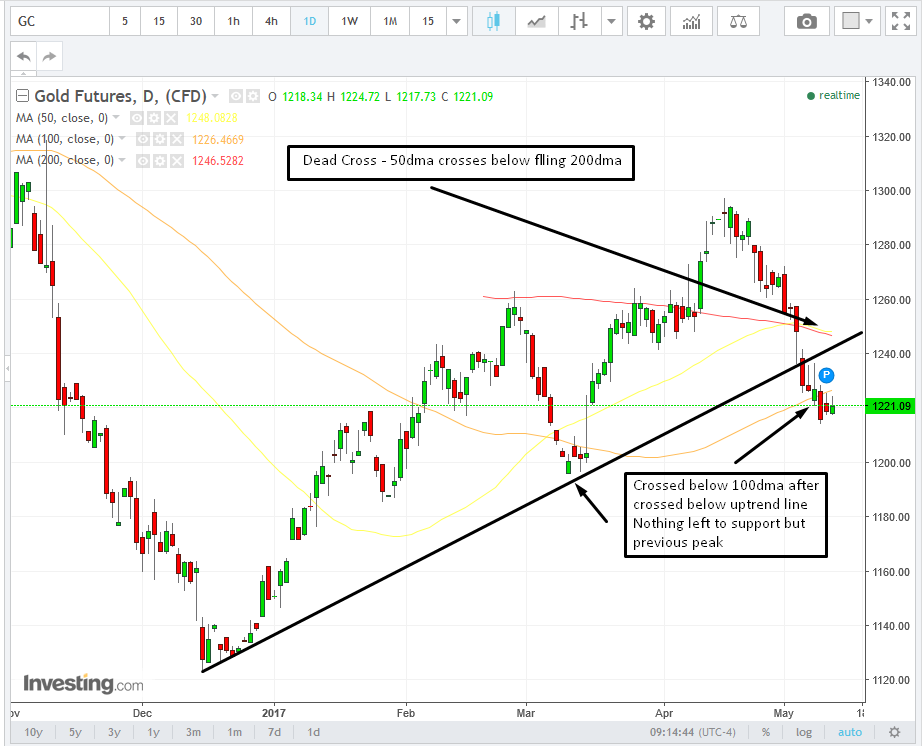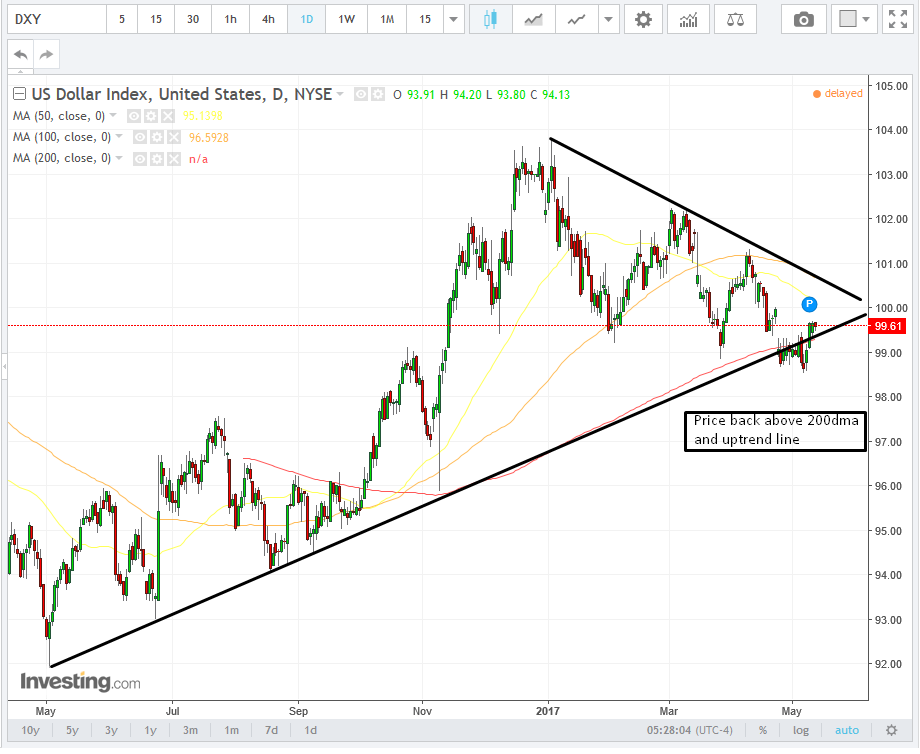by Pinchas Cohen
The US dollar and gold have a negative correlation. While gold is considered a safe haven during times of uncertainty, the dollar provides growth, in the form of interest. For that reason when sentiment is risk-on, the dollar benefits; when markets take a risk-off stance, gold regains its luster.

Since the currency and commodity almost always move in opposite directions, one can gain insight into the trajectory of each of their directions by measuring the strength of one relative to the other.
Recently both haven't been looking good, but we believe the dollar’s case is now stronger than gold's. The following two charts show why:

Since December, when gold crossed below its uptrend line, the 100 dma was no match for the momentum and it failed to support the price. Earlier this month the averages executed a Dead Cross, when the 50dma crossed below the 200dma, even as the latter was falling. The morbid name for this cross comes from the fact that it's the bearer of bad news for price momentum.

After falling below its uptrend and 200dma, the dollar climbed back above both. This makes the dollar stronger than gold. It also means there's a higher probability of the greenback rising and gold falling.
Additionally, though they are traded as two independent assets, they also have a causative relationship. A rise in the strength and value of the dollar verus other currencies would almost certainly be at the expense of the price gold.
From a fundamental perspective, with the reflation trade back on, and the Fed’s hawkish posture telegraphed earlier this week—in particular by Boston Fed President Eric Rosengren who warned that the FOMC is too slow and should act sooner before the economy starts to overheat—it looks like the dollar is set to shine more brightly, at the expense of gold.
